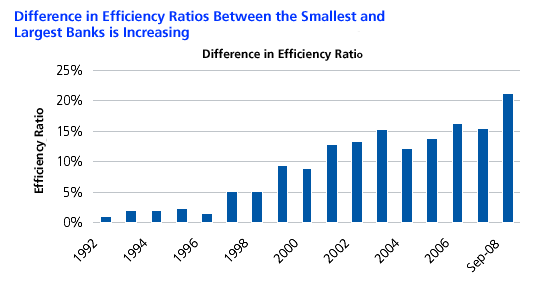It Takes More Than a Village: The Decline of the Community Bank
Abstract
The past 15 years have shown unprecedented concentration in the commercial banking space in the US, with banks with more than $10 billion in assets gaining deposit share in a dramatic way. In 1995, the top 5 banks had 11% deposit share; today, they have nearly 40%. On the other end of the scale, the number of banks with under $100 million in assets dropped by 5,410 from 1992 to 2008.
In a new report, It Takes More Than a Village: The Decline of the Community Bank, Celent looks at trends in banks by asset category and delves into the underlying causes of the decline of community banks. The report also examines the concentration of deposits at the top of the pyramid.
Banking is a more complex business than it was 20 years ago. As a result, small banks have been experiencing an increasing cost disadvantage. Deposit gathering is a scale business and the largest banks understand that and are exploiting it up to FDIC limits.

"The difference in efficiency ratios between the smallest banks and the largest ones has grown from nil to over 20%," says Bart Narter, senior vice president of Celent’s Banking Group and author of the report. "This gap has been steadily increasing over time, and it will continue to increase. The world is only getting more complex. Regulatory burdens increase. Channels proliferate. Small banks are overwhelmed."
This report first examines bank counts and then the efficiency ratios that measure cost. It then looks at banks’ deposit gathering by asset category and finally follows the top five banks and how they have merged, acquired, and evolved to obtain nearly 40% deposit share.

